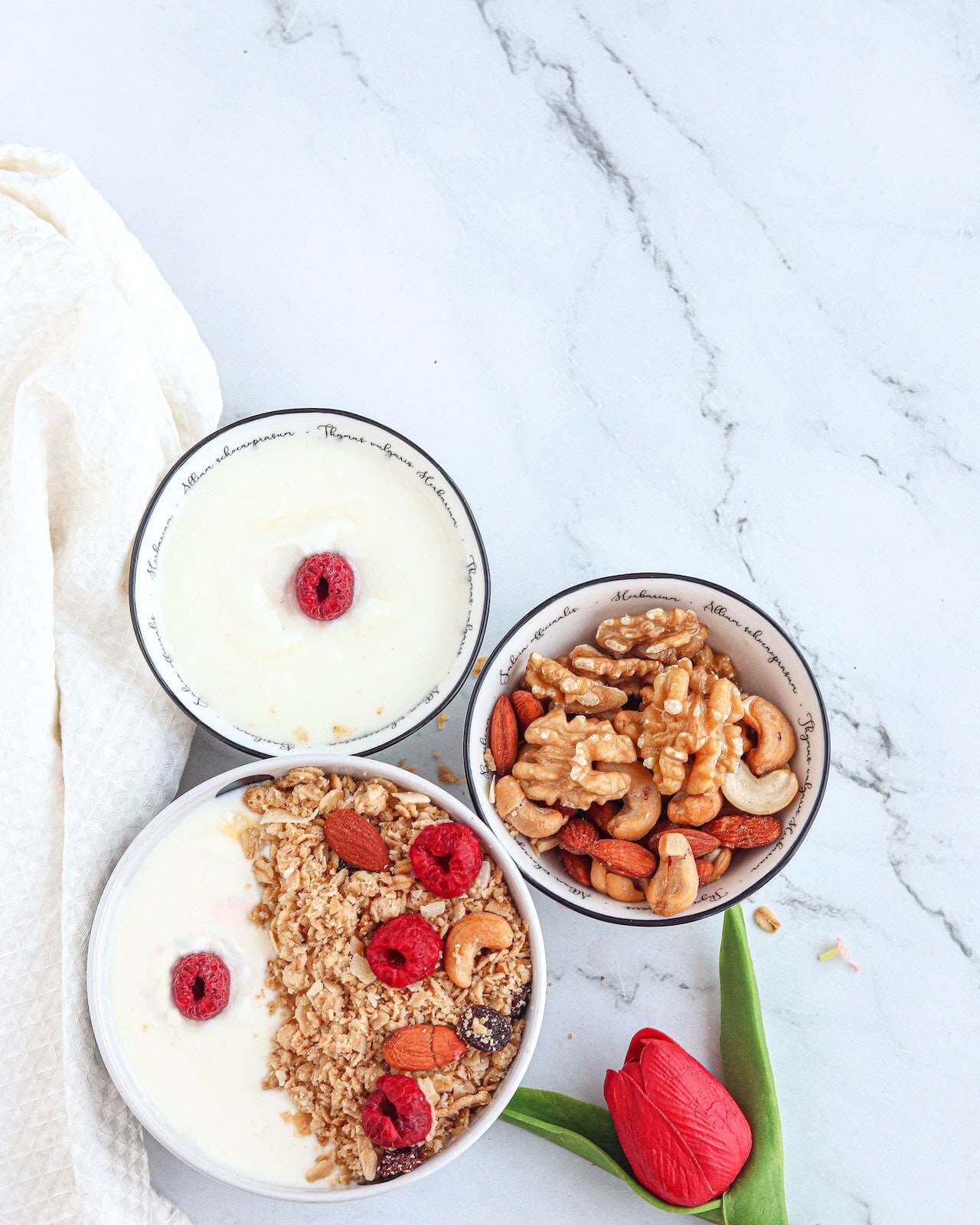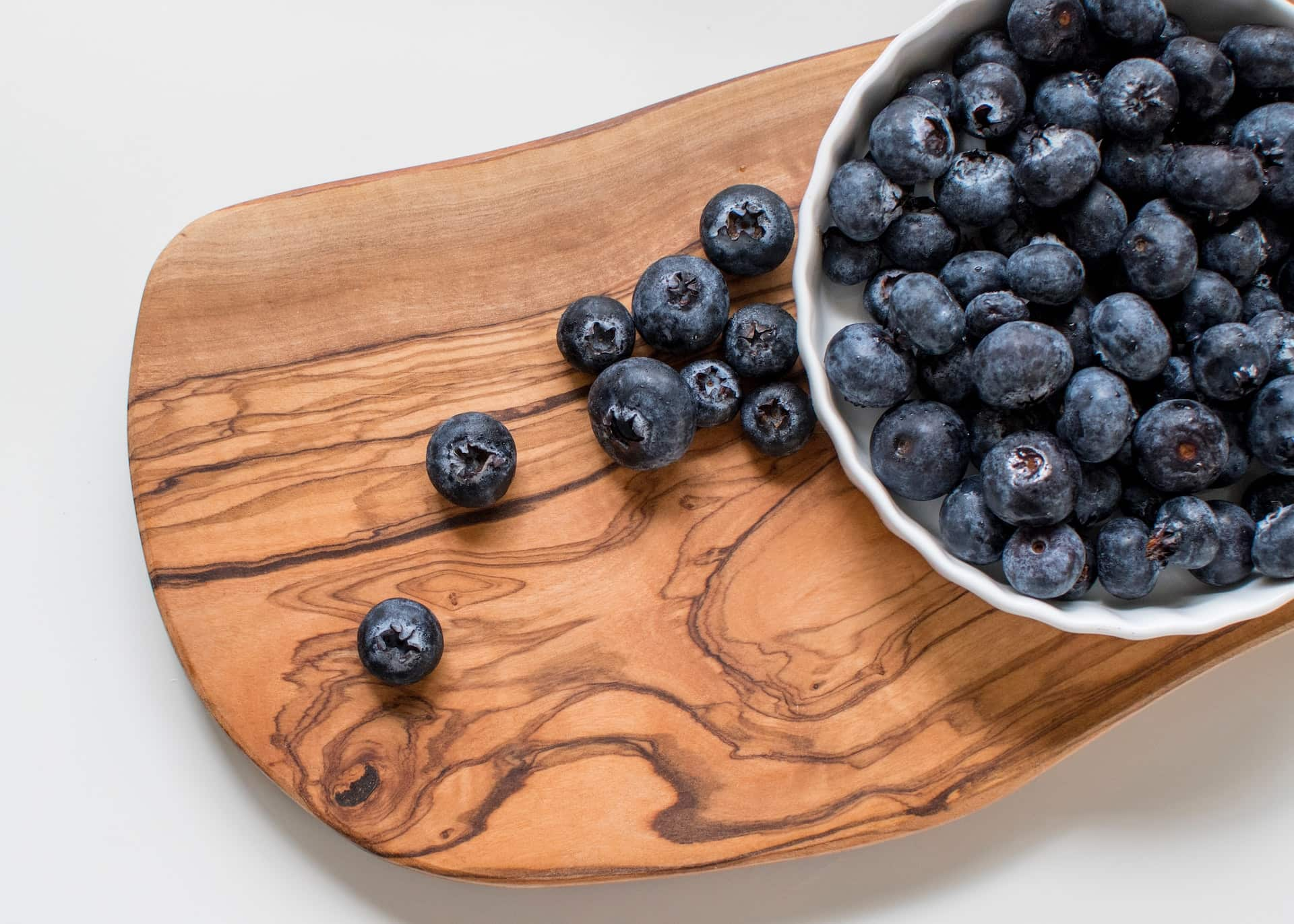Olive oil is a staple of the famously healthy Mediterranean Diet and is something that most people regularly have on hand in their kitchens. Great for sauteing, drizzling, or as the key ingredient in homemade salad dressings, olive oil is widely considered to be one of the healthiest cooking oils. Let’s dive into why olive oil is good for you, what the specific health benefits are, and also take a look at potential negative side effects.
{{mid-cta}}
A Little About Olive Oil
Olive oil is (not surprisingly) derived from the olive fruit of the olive tree. Olive oil is described as having a fruity, bitter, pungent, or buttery flavor and can range in color from green to gold. The region, the type of olive, and the way it’s produced can all impact the taste and even the health benefits of olive oil. Spain, Italy, and Greece are the top three countries for olive oil production and generate almost 70% of all olive oil sold worldwide.1
Below are a few different types of olive oil, and their names reflect the way they are produced.2
Extra Virgin Olive Oil (EVOO)
This is the gold standard for olive oil, as it’s the least processed. It’s unrefined and cold-pressed (produced via mechanical methods, not with heat or chemicals), so it maintains the highest level of health-promoting phytonutrients
Virgin Olive Oil
Similar to EVOO, virgin olive oil is also produced by mechanical methods. Unlike EVOO, this type of olive oil is allowed to have minor flavor defects.
Regular/Pure Olive Oil
This oil is a mixture of refined olive oil and 15 to 25% virgin olive oil. The refined oil is treated with heat and chemicals during the manufacturing process, which can reduce the level of phytonutrients and lower the potential health benefits.
What Are the Health Benefits of Olive Oil

Olive oil is high in healthy monounsaturated fats like oleic acid and low in inflammatory polyunsaturated fats like omega 6. It also contains an array of phytochemicals like tocopherols and phenolic compounds that have many powerful health benefits. Below are the top beneficial effects of olive oil:
Rich in Antioxidants
The phenolic compounds found in olive oil are responsible for a significant amount of its antioxidant effects. Antioxidants in olive oil can neutralize free radicals, which protects cells and DNA from damage and reduces overall inflammation in the body.3
Good For Heart Health
The polyphenols found in olive oil have anti-inflammatory properties and offer impressive cardiovascular benefits. Consumption of olive oil is associated with a lower risk of cardiovascular disease (CVD) and diabetes, reduced LDL cholesterol, increased HDL cholesterol, lower blood pressure, and improved blood vessel function.4 Olive oil may be one of the most heart-healthy foods on the market.
Brain Benefits
Polyphenols like the ones found in olive oil are linked to lower rates of neurodegenerative diseases. One specific compound, oleuropein, has been shown to be neuroprotective by neutralizing a harmful peptide that is believed to contribute to several degenerative diseases like Alzheimer’s disease and Parkinson’s disease.5
Gut Health & Weight Loss
Olive oil intake has been found to reduce the growth of harmful bacteria and stimulate the growth of beneficial bacteria in the gut. Consumption of EVOO has also been associated with reduced body weight, reduced risk of type 2 diabetes, as well as improved blood glucose levels.6
Anti-Cancer Properties
Due to its high antioxidant activity, EVOO has been shown to lower overall cancer risk by reducing the incidence and growth of different types of cancer cells. It has been shown to be particularly effective against breast cancer and colorectal cancer.3
Olive Oil: Nutrition Facts
Olive oil is one of the world’s healthiest sources of fat (specifically monounsaturated fatty acids) and also contains an array of other nutrients. Below is a breakdown of the macro and micronutrients found in 1 tablespoon of olive oil:7
- Calories: 124kcal
- Fat: 14g
- Carbs: 0g
- Fiber: 0g
- Sugar: 0g
- Vitamin E: 2g
- Vitamin K: 8.4ug
In addition to the above, olive oil contains 20 different polyphenols and other health-promoting phytonutrients like chlorophyll and carotenoids.3
Olive Oil: Risks and Side Effects
While the benefits surely outweigh the risks, consuming large amounts of olive oil can have some potential side effects.
High in Calories
Olive oil is not considered a low-calorie food. Anyone following a calorie-restricted diet should be mindful of serving size when consuming olive oil. A few tablespoons can quickly add up and put you over your calorie threshold.
High in Fat
While olive oil is considered a healthy fat, it is calorie-dense; just one tablespoon contains 14 grams of fat. Individuals wanting to lose weight may want to watch their portions of high-fat ingredients like olive oil.
May Cause Stomach Pain & Diarrhea
Although olive oil's fat is healthy and monounsaturated, people with digestive issues can still be negatively impacted. High-fat diets can cause people with conditions like celiac disease, inflammatory bowel disease, gallbladder issues, or other digestive concerns to experience fat malabsorption, which can lead to abdominal discomfort and diarrhea.
<p class="pro-tip"><strong>Also Read: </strong><a href=pumpkin-seed-oil-benefits>Pumpkin Seed Oil: A Guide to Its Uses, Benefits & More</a>.</p>
Common Uses of Olive Oil

Olive oil is incredibly versatile as a vegetable oil. Its high monounsaturated fat content makes it more heat stable than other oils, plus it’s got a great flavor. Below are some of our favorite ways to incorporate more olive oil into your diet:
As a Dip
Using olive oil as a dip for bread not only tastes great but also provides healthy fats, which will slow the absorption of carbs and help prevent blood sugar spikes
Drizzle on Cooked Veggies
Top off your vegetables with a drizzle of olive oil. The added olive oil will help you better absorb fat-soluble compounds like vitamin A from your vegetables.
As a Salad Dressing
Skip the store-bought dressing and make your own! Olive oil works great on its own, mixed with salt and pepper, or try mixing it with lemon juice or balsamic vinegar for a dressing with more of a bite.
In Baked Goods
Olive oil can take the place of butter in many recipes. It can add a unique flavor and moisture to your favorite cakes or cookies.
With Pasta
Nothing says summer like a refreshing pasta salad topped with olive oil! Let your cooked pasta cool, then toss it with crisp veggies, cheese, and your favorite olive oil.
5 Tips for Buying the Best Olive Oil
Olive oil is expensive, so you want to make sure you’re getting what you pay for. Check out of tips below:
- Always choose extra virgin olive oil because it’s the least processed and retains the highest amount of antioxidants.
- Aim for organic whenever possible.
- Check the label for the harvest date, as this indicates freshness.
- Look for dark-colored bottles to prevent oxidation. Sunlight can oxidize the oil and impact the quality of the nutrients, so a darker-colored container helps maintain the quality.
- Look for labels indicating third-party certifications (e.g., International Olive Council, California Olive Council, etc).
Learn More About the Impact of Blood Sugar on Overall Health With Signos’ Expert Advice
Signos incorporates cutting-edge research and the proven power of continuous glucose monitoring to help you lose weight and reach your health goals. Not sure if Signos is right for you? Take this quiz to find out! Interested in learning more about nutrition and healthy eating habits? Check out more articles on the Signos blog.
<p class="pro-tip"><strong>Learn More: </strong><a href=paleo-meal-plan>7-Day Paleo Meal Plan for Beginners</a>.</p>
- Item 1
- Item 2
- item 3
Topics discussed in this article:
References
- https://www.aboutoliveoil.org/olive-oil-production-by-country
- https://www.oliveoil.com/the-different-types-of-olive-oil-their-uses/
- https://www.ncbi.nlm.nih.gov/pmc/articles/PMC6150410/
- https://www.jacc.org/doi/10.1016/j.jacc.2020.02.043
- https://www.ncbi.nlm.nih.gov/pmc/articles/PMC3730992/
- https://academic.oup.com/nutritionreviews/article/79/12/1362/6133931
- https://fdc.nal.usda.gov/fdc-app.html#/food-details/1103861/nutrients
































